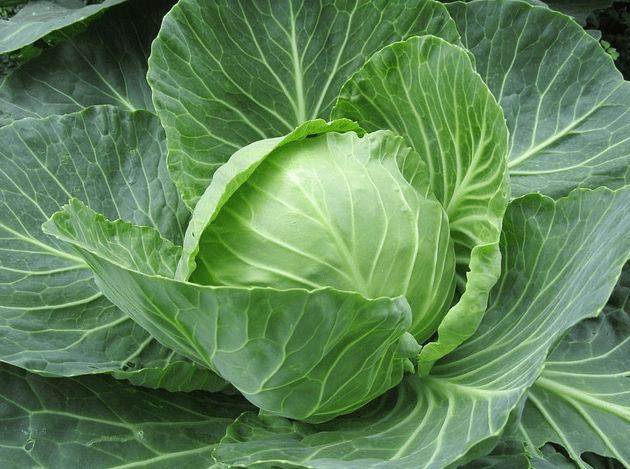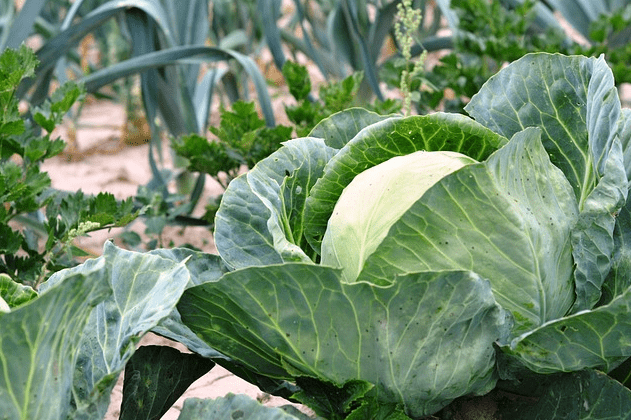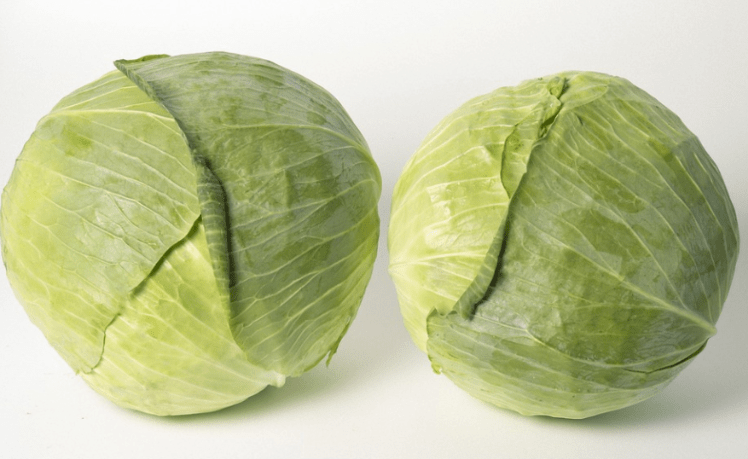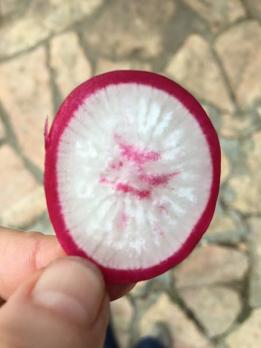I've mentioned cabbage several times in our newsletter…
But when I think of all the times I wrote about cabbage, it was always about the wild ancestor cabbage. It was always in the context of one of its many descendants (partial list: cabbage, broccoli, cauliflower, Brussels sprouts, kale). However, I've never dedicated a full review to the old and reliable patriarch of this family – the classic garden cabbage.
All members of this family originated from a modest plant in the Brassicaceae family – wild cabbage. This plant was widespread millions of years ago, from Africa and Arabia to the Middle East, the Far East and all the way to northern Europe. This plant was identified as a source of food even before written history, when our ancestors were hunters and gatherers.

With the agricultural revolution, this plant began to be cultivated in various places worldwide, from the Far East to Northern Europe. It seems that the Greeks were familiar with a variety of cabbage very similar to the garden cabbage we know today, and it's quite likely that even in our region, people were well acquainted with it in ancient historical periods.
This leads to an interesting reflection on the Hebrew name for this vegetable – "kruv" (cabbage). The term "kruv" appears several times in the Bible but with an entirely different meaning. The biblical "kruv" is a mythical creature, belonging to a category of "angels" whose images adorned the Ark of the Covenant. It is indeed tempting to make an etymological connection, and I've encountered people who, in their imagination, see the shape of a cabbage leaf resembling the wings of angels.
This is a romantic and heartwarming idea, but unfortunately, it lacks any basis. The term "kruv" in the context of a cabbage vegetable is mentioned in the Mishnah, but precisely for this reason, it's easy to trace its origin back to the Greek word for the plant: κράμβη (krambe). Despite the similarity in pronunciation and spelling, there is no connection to the angel-kruv cabbage.
In any case, cabbage has been a part of the diet here even in ancient times and continues to be a staple in our diet today. However, in our neighborhood, cabbage was one ingredient of many, while in some regions of Northern Europe, especially in Germany and the Czech Republic today, cabbage played an even more fundamental and dramatic role.

Throughout the Middle Ages and until the 16th century, including when potatoes arrived in Northern Europe following the discovery of America, the cabbage, together with turnips, was a significant part of the simple people's diet. Boiled as a vegetable, the base for soup, pickled – a lot of cabbage.
The peasant population in Northern and Eastern Europe survived thanks to the hardy cabbage, which, along with grains (various kinds of bread), was a long-standing staple of their culinary standard. The low caloric value, combined with essential dietary fibers, vitamins, and minerals, not to mention the feeling of satiety, made cabbage an essential vegetable for the common people in 14th-century Saxony and remains very popular among Israelis in the 21st century who are interested in losing weight.
Over the years, dietary options in Northern Europe expanded, but the impact and dominance of cabbage in these regions are still very much present. Even today, you will meet cabbage, either in boiled or pickled form, in any German kitchen. For this reason, the common term for Germans by the British is “Kraut”, which actually means pickled cabbage.
Personally, I love fresh cabbage salad, and it doesn't matter which cabbage it is. This time, in solidarity with the fighters in the Givati Brigade battling in the Gaza Strip, I'll choose the purple cabbage, which during my military service we used to call it “ Givati cabbage”.









